Restorative Dentistry Brookfield, CT

The right restorative procedures at the right time can reduce the need for additional dental work in the future.
Restorative procedures help protect both oral health and overall health while improving the appearance of the patient’s smile. Being able to properly chew food and having correct bite alignment affect a patient's health in ways that go beyond just a smile.
The Biomimetic Approach
Biomimetic Dentistry is defined as the reconstruction of teeth to emulate their natural biomechanical and esthetic form and function. Simply put, biomimetic dentistry means to copy what is life-like. With biomimetic dentistry, only the damaged and decayed part of the tooth is removed and the final restoration is bonded to the remaining healthy natural tooth structure. Biomimetic restorations include stress-reduced direct composite restorations and porcelain/composite inlays and onlays that restore the biomechanics of broken and damaged teeth.
When restoring damaged, broken, and decayed teeth, the goal is to return the tooth to its original strength, function, and esthetic. Biomimetic dentistry accomplishes all of this in a conservative approach with strong and attractive results.
Composite Fillings
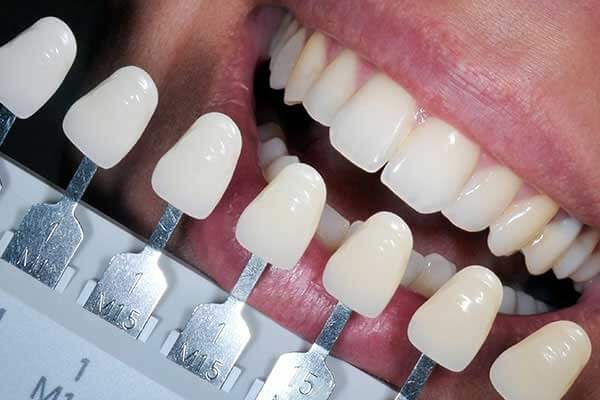
Composite fillings use tooth-colored material to restore teeth with cavities and maintain a natural appearance. Once the decay is removed, the tooth is filled with a composite material which is then cured using a specialized light to harden the material. Composite fillings can be done in one visit.
Inlays and Onlays
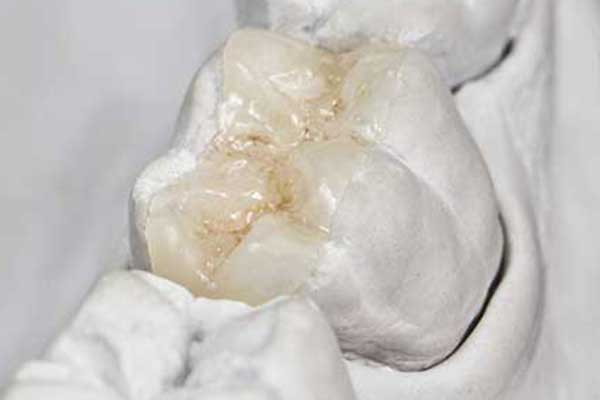
An inlay or onlay is a partial crown restoration that can be placed when there is not sufficient tooth structure to support a filling but enough tooth structure left that a full crown is not needed. Inlays/onlays are made of porcelain or gold, and they aesthetically and functionally replace the tooth structure.
Crowns
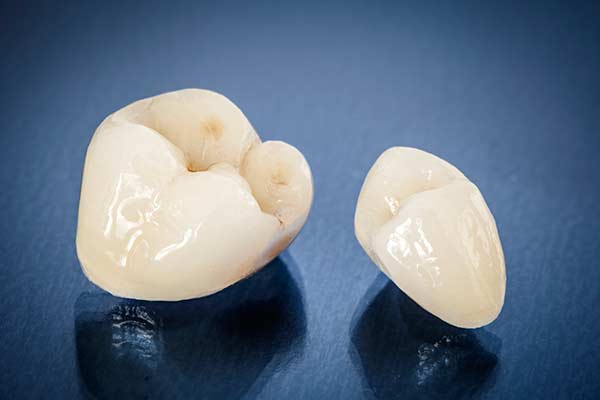
A crown is a dental restoration that completely covers the outside of a tooth that is cracked, broken, worn down, or severely decayed. Dental crowns are usually completed in two dental care visits. During the first visit, the tooth is prepared (shaved down) and an impression is taken. A temporary crown is placed while the permanent crown is fabricated. During the second visit, the permanent crown is carefully fitted and then cemented into place.
Dental Bridges
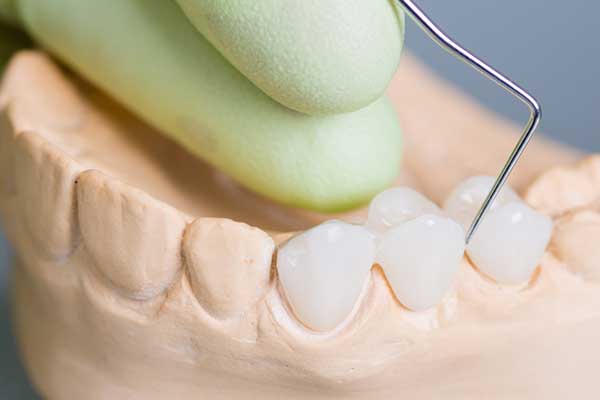
A bridge can replace missing teeth without the use of a denture or dental implant. A bridge is composed of two crowns and a replacement tooth or teeth. Crowns are typically placed on the teeth on either side of the space, with the fabricated tooth or teeth attached in between.
For multiple missing teeth, an implant may be used to anchor the bridge.
Implant Restorations
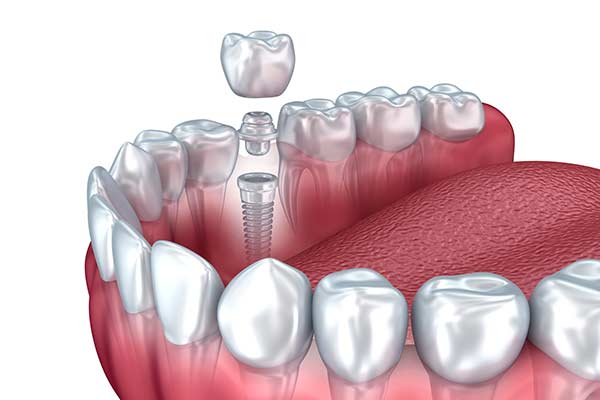
Dental implants are composed of three pieces: a small screw made of a biocompatible metal called titanium, an abutment which connects the screw and the final restoration, and the final restoration. The screw, which is placed in the jawbone, acts as a replacement for the tooth root, providing a strong foundation for fixed or removable replacement teeth. The screw begins to fuse with the bone over the course of a few months. After the fusing process, known as osseointegration, the abutment is inserted into the screw to allow for the permanent attachment of the restoration.
Dentures
A denture is a replacement for multiple missing teeth within the same (upper or lower) arch. A denture differs from a crown or bridge in that it does not rely on an existing tooth structure, and it completely replaces the missing teeth.
There are several different types of dentures:
- Full or Partial
- Removable or Fixed
- Traditional or Implant-Supported
Restorative Dentistry FAQs
Do restorative procedures repair or replace teeth?
Some restorative procedures repair the existing teeth, such as fillings and crowns, and other procedures replace teeth, such as bridges and dental implants. The ultimate goal is to restore your dental health to restore a healthy smile by whatever means necessary.
How long does a dental crown last?
On average a dental crown can last anywhere from 5 to 15 years, but they can last much longer with good care and dental hygiene. Many crowns last for the patient’s lifetime as long as the natural tooth root remains intact.
What replacement options are available for a missing tooth?
A single missing tooth can be replaced with a bridge or a dental implant. A bridge is a one piece prosthetic consisting of a row of artificial teeth with crowns on each end that fit over the existing teeth for support. A dental implant is an artificial tooth and root system that is surgically placed in the jaw. We can help you determine which option would be best for you.
What can be done for multiple missing teeth?
If you are missing multiple teeth, a bridge or a partial denture can be used to replace them. If none of the teeth can be saved in either the upper or lower jaw, dentures can be used to replace them. Both bridges and dentures can be supported by dental implants.
Are restorative dental services covered by insurance?
Most restorative procedures are covered by dental insurance, with the exception of dental implants. In most cases restorative procedures can prevent the need for more expensive procedures, making them beneficial to both the patient and the insurance provider.